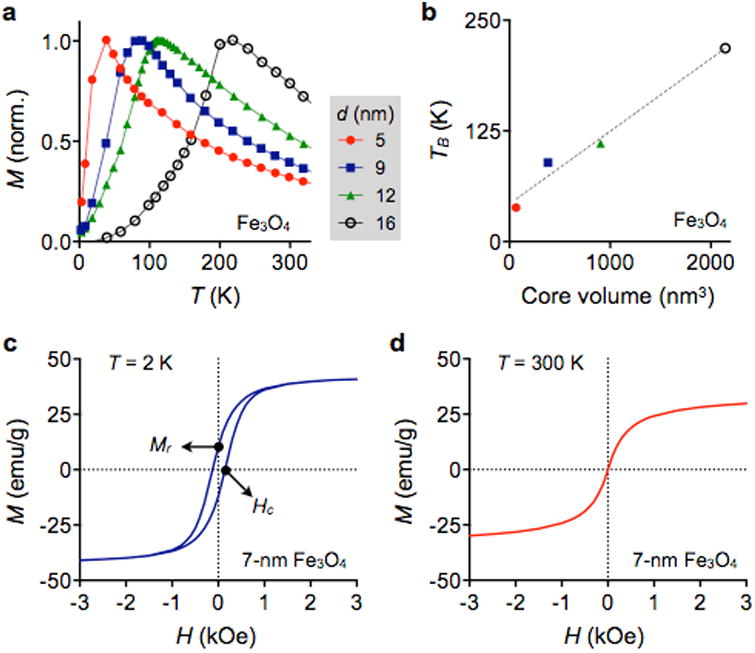Figure 15. Magnetic characterization.

(a) Temperature-dependent magnetization curves M (T) of differently sized Fe3O4 MNPs are shown. The temperature at which M has its maximum is defined as the blocking temperature (TB). When T<TB, the magnetization increases with T, because thermal energy helps magnetic domains to rotate and align with the external magnetic fields. When T>TB, thermal energy is large enough to cause random fluctuations of magnetic domains, which leads to a decrease of M. (b) TB from (a) is plotted against the core volume. TB for a given material is generally proportional to the particle volume, because the anisotropy energy barrier scales with the particle volume. (c) Field-dependent magnetization M(H). Below the blocking temperature, MNPs display hysteresis in response to the applied magnetic field (H). The non-zero magnetization at H = 0 is called remanence (Mr), and the field strength to reduce M = 0 is defined as coercivity (Hc). (d) MNPs in a superparamagnetic state displays negligible Mr and Hc. The M value monotonically increases with H as in paramagnetic material. Reproduced with permission from Ref. Copyright 2004 Nature Publishing Group.
